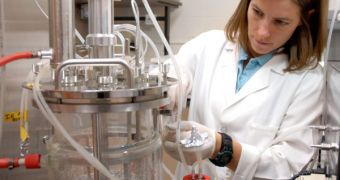The concept of 'natural systems' refers to two main areas of research, namely producing energy from plants and microorganisms, and creating groundbreaking, sensing and response capabilities. The US National Science Foundation (NSF) is at the forefront of these efforts, having announced the awarding of 20 new grants for fiscal year 2009. Nearly $40 million were awarded to 94 investigators from 27 institutions, over a four-year period. This was done through the agency's Office of Emerging Frontiers in Research and Innovation (EFRI).
“Big ideas are needed if we are to significantly advance the development of biosensing and biofuels. That's why EFRI is stimulating high-risk research in these areas of national need,” the NSF Assistant Director for Engineering, Thomas Peterson, explains. The first area of research, sensing and responding, is aimed at understanding seemingly simple things, such as how butterflies drink, how spiders see, how fish move, and how some plants catch flies. The mechanisms underlying these abilities will be scrutinized, and artificial systems to mimic them will be created as soon as possible.
DNA, neurons and other biological materials will also be carefully analyzed, in an attempt to either replicate their activity, or to find ways to improve on it. “Working at the interface of living and engineered systems presents many challenges but also new opportunities for discoveries that will address a number of national needs, which include detecting precursors of serious diseases, protecting critical and aging infrastructures, and mitigating environmental hazards and pollution,” EFRI Director Sohi Rastegar says.
The second line of research will deal with finding ways of producing biofuels from biomass, in a way that would allow this method to become a competitive alternative to the established fossil-fuel industry. Algae, switchgrass and poplar trees, alongside agricultural and lumber residues, represent potent starting points for this line of research. “If an effective conversion pathway is found, biomass could provide a sustainable and significant source of gasoline and diesel fuels, as well as essential chemicals. Furthermore, these green fuels and chemicals would be compatible with existing infrastructure,” Rastegar adds.
Other researchers will try, for example, to figure out new ways of using lignin, the often-discarded byproduct of the paper industry. Some initiatives have already used the element to create a substance known as liquid wood. Hydrocarbon production methods will also be explored to the point where they become cheap and effective, the NSF says. “While results from EFRI investigations are uncertain, we are determined to pursue them, because their pay-off could be enormous,” the expert concludes.

 14 DAY TRIAL //
14 DAY TRIAL // 
